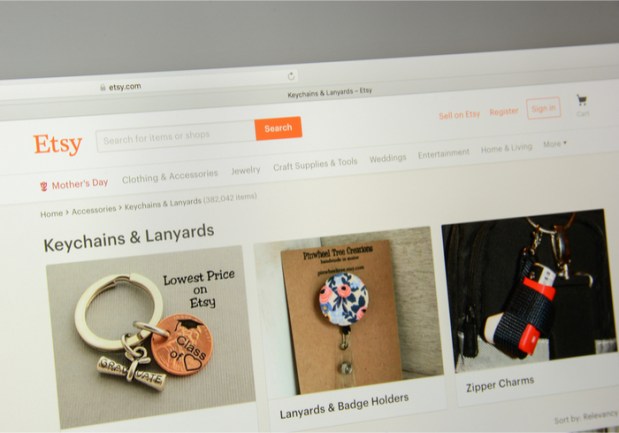Etsy User Base Grows In Q2 Despite Fee Increase

After Etsy increased its revenue guidance for the year and reported stronger-than-expected revenues, shares of the crafts marketplace rose more than 8 percent in after-hours trading on Monday (August 6). Etsy upped its revenue guidance from the $582 million-$591 million range to the $587 million-$596 million range, while the company reported revenues of $132.4 million compared to analysts’ estimates of $127.1 million.
In terms of user growth, Etsy Chief Executive Josh Silverman noted that active buyers grew by 17 percent and active sellers rose by 8 percent, “indicating that we continue to deliver on our commitment to bring a growing base of buyers to our sellers.” Silverman also noted that conversion rate increased for the third consecutive quarter, which was driven by improvements in mobile web.
At the same time, Etsy changed its pricing model by raising transaction fees from 3.5 percent to 5 percent, and now includes shipping cost in the calculation of the transaction fee. By bringing shipping cost into the equation, Etsy can incentivize sellers “appropriately and fairly price shipping” to improve the buyer experience. Overall, Silverman noted, “we believe that Etsy’s new pricing model, which went into effect in mid-July, will allow us to further expand our marketplace and support our seller community.”
Silverman defended the increase by saying that the new percentage is an “excellent value” compared to other channels by which sellers could acquire customers and sales. In explaining the fee increase, Silverman said Etsy is keeping the listing fee at 20 cents because the transaction fee is “entirely aligned with success of our sellers,” as it is paid only when sellers make a sale. In terms of response to the new fee percentage, Silverman said seller feedback is “in line with expectations,” noting that there were “pockets of discontent” but that sellers “seem to understand the rationale for the change.”
Search and Discovery
For its search and discovery efforts, Etsy has focused on curating items with an eye on visitors coming to the site without a particular purchase occasion in mind. In the second quarter, for example, Etsy ran several experiments with user-generated, curated collections on its home page, search, email and social channels. Overall, the company is also working to personalize search experience, with results tailored to the desires and preferences of each buyer. Still, Silverman noted that “there’s a great deal of opportunity to do better here, and we’re just beginning.”
The company, for example, has begun to incorporate a buyer’s location as an attribute in a machine-learning algorithm used to categorize and rank search results. By serving localized content higher in the ranking, Silverman said, Etsy is better able to satisfy buyer expectations of shipping speed, as well as promote the look and feel of a local marketplace. And, as tastes and trends are often regional, Silverman said location can be important for delivering relevance.
“This launch had a positive impact on conversion rate, and we’re excited to continue leveraging our machine learning capabilities to drive more relevant and personalized search results,” Silverman said.
Marketing and International Reach
In terms of promotion, Etsy is looking to offline marketing as a “potentially large untapped opportunity.” Last week, NBC premiered a prime time, six-episode crafting competition called “Making It,” starring Amy Poehler and Nick Offerman along with Etsy Trend Expert Dayna Isom Johnson. (The company has ads running in each episode.) And, in the second half of the year, Etsy plans to experiment with a television campaign: The company has produced two “creative concepts” that will each be tested in three local markets.
“We will evaluate how these campaigns translate to Etsy.com visits and purchase behavior and begin to learn whether above-the-line advertising could be a scalable, ROI-positive channel for accelerating growth,” Silverman said.
Beyond marketing, Etsy has been focusing on international markets. The marketplace, for example, has reached a referral agreement with DaWanda, a Germany-based marketplace with a significant presence in Poland, Austria and Switzerland. The site, which is shutting down in August, is encouraging users to migrate to Etsy, and all traffic will be sent to Etsy when DaWanda goes offline. And, beyond its core global markets such as the U.K. and Canada, Etsy has a small team on the ground to expand and support the selling community in India.
